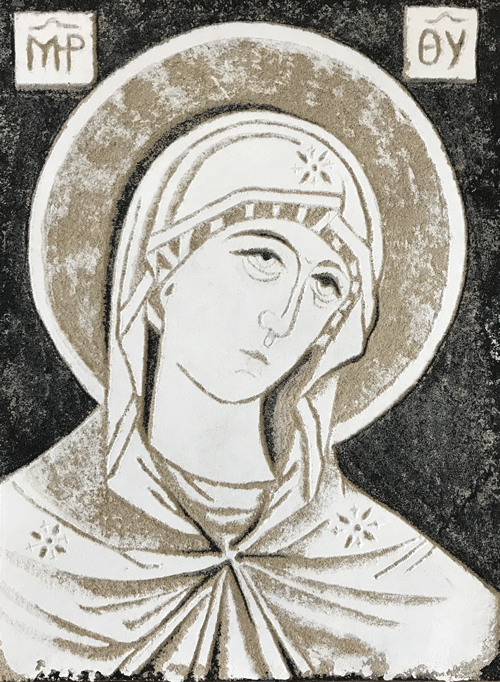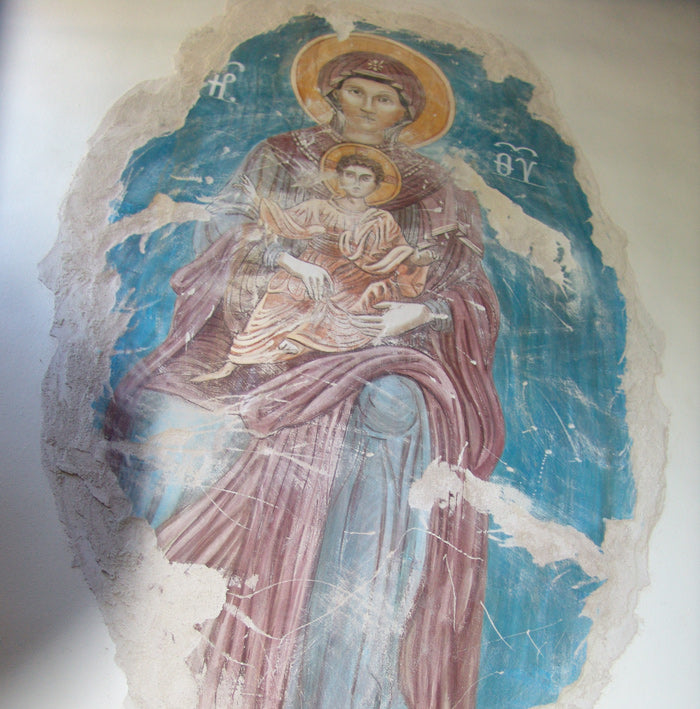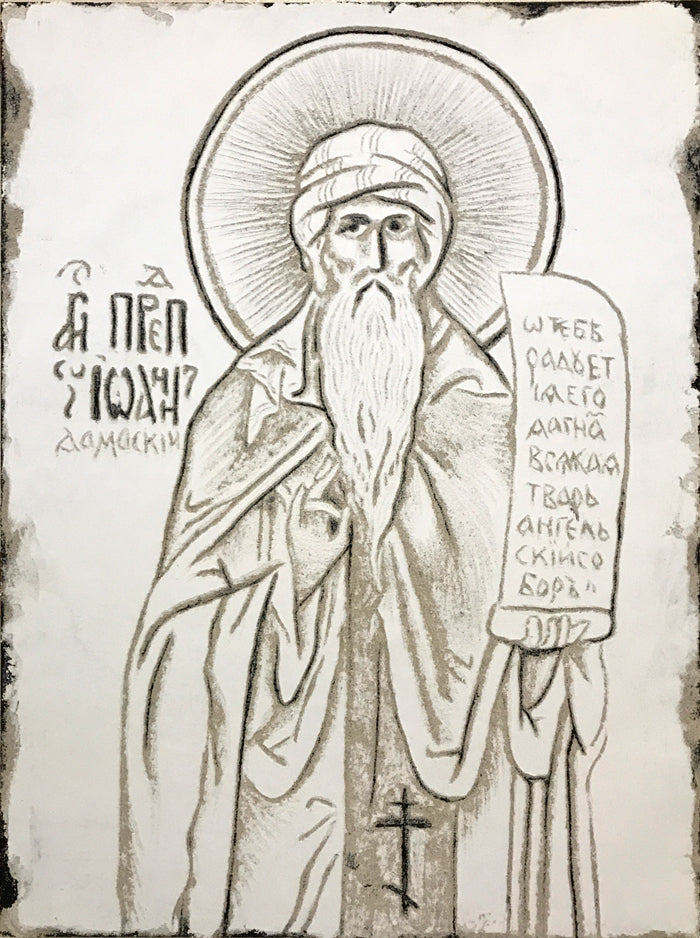The Andronicus Icon of the Mother of God, is a miraculous icon that allegedly used to be a family icon, a holy treasure belonging to Byzantine Emperor Andronicus III Palaeologus, from whom it took its name.
According to the earliest extant documentation regarding the Icon, the Andronicus Icon was written by the Holy Evangelist St. Luke in 1347. Andronicus donated it to the Monemvasia Monastery in Morea, where it remained until the early 19th Century; because of its association with that Monastery, it was also known as the Monemvasia Icon.
When many towns, including Monemvasia, were ravaged after Greece was attacked by the Ottoman Emprire in 1821, Bishop Agapios, abbot of the Monastery, left all of the Monastery's treasures to the enemy, except for the Miraculous Andronicus Icon, which he managed to save and take with him into hiding in Patras.Before his death, Agapios willed that Holy Icon to a relative, the Russian general consul N. I. Vlassopoulos In 1839, it was presented to Russian Emperor Nicholas I".
In Russia, the icon was kept first at the Winter Palace and then at the Cathedral of the Holy Trinity in St. Petersburg and later on, at the Convent of the Kazan Icon of the Mother of God in Vyshni Volochok where it remained until the revolution of 1917. At the Convent of the Kazan Icon of the Mother of God, the holy image was inserted into another, larger icon showing St. Neonilla the Martyr and St. Ephraem Syrus. That is why they may also be present in later copies of the icon.
Feast days: May 1/14 and October 22/November 4. (Julian/Gregorian calendars)
The Original Icon depicts the Theotokos to the chest, without the Divine Infant. There is a bleeding wound on the right side of the Mother of God's neck. A sheath affixed to the lower part of the Icon housed a bone handled, Damascene steel knife, with which an enemy Turk had struck the Icon; following that attack, the bleeding wound appeared on the Icon. Also affixed to the Icon was the Byzantine coat of arms - the Double-headed Eagle, attesting to the Imperial heritage of the Image. The Icon's dimensions were approximately 25 x 35 cm.


